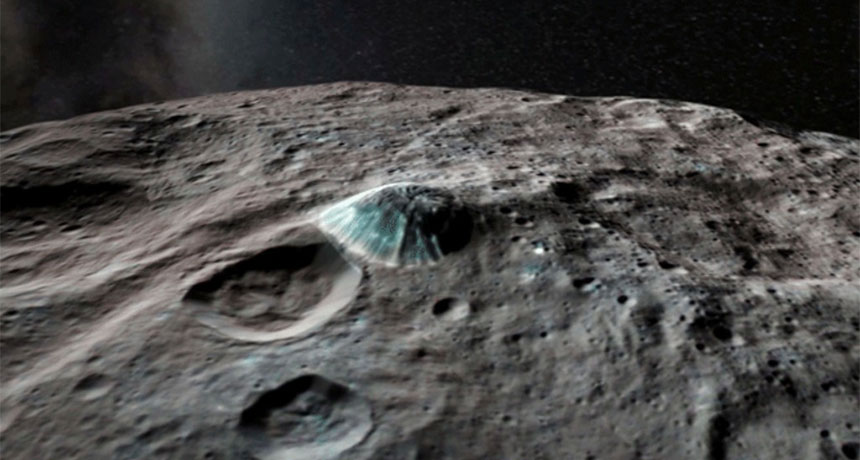The ghosts of nearly two dozen icy volcanoes haunt dwarf planet Ceres
Remains of eruptions suggest the world has been volcanically active for billions of years

NOT ONE OF A KIND Scientists thought Ahuna Mons (shown in the center of this image constructed from surface maps taken by NASA’s Dawn spacecraft) was the only icy volcano on dwarf planet Ceres. Now it seems it’s just the youngest.
NASA’s Goddard Space Flight Center








